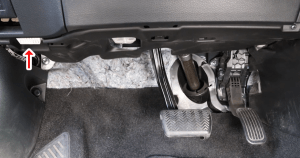In a contemporary landscape where the importance of safety and security is undeniable, ensuring the protection of your valuable assets, including your car, emerges as a top-tier concern. An efficient method to fortify the security of your vehicle involves the installation of a GPS tracker. But here’s the crucial question: where is the best place to install this invaluable device, and how do you do it? In this article, we will delve into the intricacies of how to install a GPS tracker on a car, exploring various placement options and helping you make an informed decision to keep your vehicle safe and secure.
Why Put A GPS On Your Car?
Before we delve into the specifics of how and where to install a GPS tracker on your car, it’s crucial to comprehend the myriad reasons why you should consider this safeguarding measure. The motivations behind installing a GPS tracker are multifaceted, and they offer compelling advantages:
- Vehicle Security – GPS trackers serve as an additional layer of defense for your precious automobile. In the regrettable circumstance of a theft, these gadgets offer immediate tracking, substantially increasing the chances of retrieving your vehicle in its original condition.
- Enhanced Safety – GPS trackers go beyond mere security; they actively contribute to the safety of your car and its occupants. By facilitating location monitoring, these trackers ensure the well-being of your loved ones who might be behind the wheel, offering peace of mind.
- Fleet Management – For enterprises managing a fleet of automobiles, GPS trackers are absolutely essential. They provide in-depth understanding of driver conduct, route enhancement, and maintenance planning. Ultimately, this results in significant financial savings and enhanced operational effectiveness.
- Insurance Benefits – In recognition of the heightened security and safety provided by GPS trackers, some insurance companies extend special discounts to car owners who have these devices installed. It’s a win-win situation, where you bolster your vehicle’s protection while reducing insurance costs.
Now that you’re well-versed in the numerous benefits of having a GPS tracker on your car, let’s delve into the diverse types of GPS trackers available to cater to your specific needs.
Different Types of GPS Tracker
GPS tracking devices are available in a multitude of variations, designed to accommodate a wide range of requirements and individual inclinations. Understanding these types is crucial before you decide where and how to install one:
Covert and Overt GPS Trackers
Covert Trackers – These are installed discreetly, making them suitable for fleet tracking, surveillance, and law enforcement. They can be hidden under the car, inside or under seats, or even in the glove compartment.
Overt Trackers – Overt trackers are visible and are commonly used by businesses to monitor delivery trucks and shipments. In this case, both the person being tracked and the tracker are aware of its presence.
Plug and Play GPS Trackers
Powered by the vehicle’s battery, these trackers are difficult to remove. They are typically connected to the OBD-II (Onboard Diagnostics) port, found near the steering wheel. If your car lacks this port, you can install it on the dashboard.
Hard-Wired GPS Trackers
Hard-wired trackers are seamlessly incorporated into the automobile’s electrical system and linked to the vehicle’s engine. They offer multiple installation options, including within the dashboard, front bumper, under the car, under the brake light cover, in the wheel well, inside speaker pockets, glove compartments, trunk, and on the roof.
Battery-Powered GPS Trackers
These trackers run on their battery and are highly versatile. They can be placed on the sun visor, back shelf, under the passenger seat, on the roof with a magnetic box for increased signal strength, or even on the vehicle’s wheel. Battery-powered trackers are portable and easy to hide.
Having familiarized yourself with the diverse categories of GPS trackers, it’s time to delve into the optimal positions for their installation and the rationale behind these well-suited choices.
Where To Place GPS Tracker on Your Car?
The choice of location for your GPS tracker depends on various factors, including the type of tracker you have and your specific needs. Here are some recommended locations and the reasons why they are excellent choices:
Under the Car

Covert Trackers – Covert trackers are often hiddenunder the car, making them inconspicuous. This placement ensures that the tracker remains unnoticed, providing a discreet way to monitor the vehicle’s movements. The ideal area would be near the side, the space between the front and back tires.
OBD-II Port

Plug and Play Trackers – The OBD-II port is a convenient and secure location for these trackers. It is found near the steering wheel and offers easy access to the vehicle’s diagnostic system. If your car lacks this port, you can opt to install the tracker on the dashboard.
Within the Dash

Hard-Wired Trackers – Installing a hard-wired GPS tracker within the dashboard is a common recommendation by experts. It is a safe and discreet location that ensures the tracker’s security.
Front Bumper

Hard-Wired Trackers – The front bumper is another popular choice for hard-wired GPS trackers. It offers access to various wiring, making it easier to hide the tracker. This location is particularly effective for covert tracking.
Under the Brake Light Cover

Hard-Wired Trackers – Placing the tracker under the brake light cover is an ingenious location. It remains hidden unless the brake light fails, ensuring that the tracker remains discreet.
Wheel Well

Hard-Wired Trackers – For those seeking innovative placements, the wheel well can be an option. You can install a GPS tracker inside the wheel well or attach a magnetic tracking device to the wheel’s metal part.
Battery-Powered Trackers

Portable Locations – Battery-powered GPS trackers offer portability, allowing you to place them under the sun visor, on the back shelf, under the passenger seat, on the roof with a magnetic box for increased signal strength, or even on the vehicle’s wheel. The choice depends on your tracking needs and preferences.
Make the Right Choice in Installing GPS
In conclusion, deciding the best place to install a GPS tracker on your car involves assessing your specific requirements, the type of tracker you have, and your desired level of visibility. GPS trackers are of immeasurable value in bolstering security, guaranteeing safety, and streamlining the management of vehicle fleets. Whether you choose a covert or overt tracker, a plug-and-play device, a hard-wired system, or a battery-powered option, the installation location plays a vital role in the device’s effectiveness. By making an informed choice, you can harness the full potential of a GPS tracker and enjoy the peace of mind it offers for your vehicle’s protection and safety.
